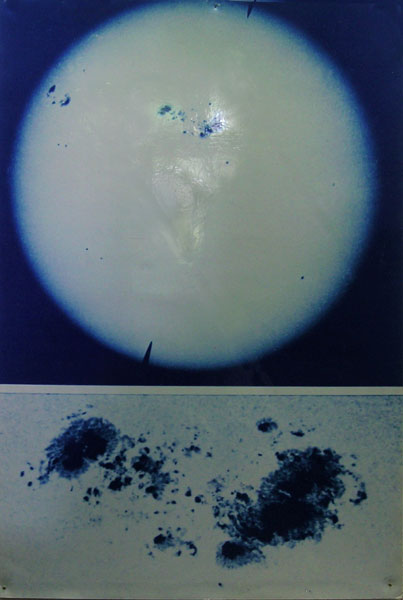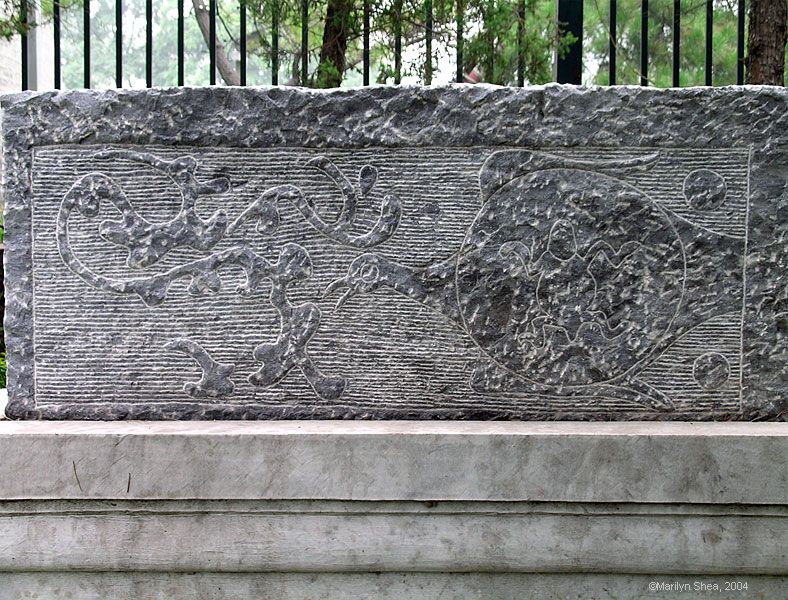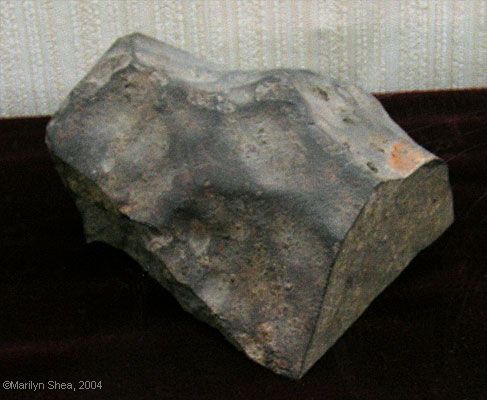 |
| SUNSPOTS 太阳黑子 (tàiyánghēiz ǐ)
The chart above is of modern sunspots. Sunspots were first observed and recorded in China during the Shang Dynasty (~1700 BC to ~1027 BC). In the I Ching, a very early observation of sunspots was recorded as "three suddenly bursting fires eating a chunk of the sun." Shi Shen (石申 Shí Shēn) observed sunspots in the 4th century BC and thought they were a type of eclipse that would spread out from the center. Much later during the Han Dynasty more exact records were kept. The phenomena were first thought to be "guest stars" and to be moving past the sun, but later they were correctly identified as features of the sun itself. Interestingly, when Galileo first observed them in 1611 there was a similar argument at that time among astronomers as to their nature. In October of 1611, a Jesuit, Scheiner, began to make observations of sunspots and published his findings in January 1612. He interpreted the sunspots as small planetoids revolving around the sun. Galileo, in turn, began a more serious study of sunspots after reading this paper. He contended that they were on the surface as they were not visible at anytime on the edges of the sun but disappeared by parts as they revolved out of sight. Scheiner eventually agreed with him and continued the study of sunspots as Galileo lost interest and went on to other studies. ECLIPSES 日蚀 (rì shí) The earliest solar eclipse record that can be verified appears in a bone inscription dating back to 2136 BC. Kevin Pang, Hung-hsiang Chou, Kevin Yau, and John A. Bangert presented findings in 1990 that examined the change in the earth's spin based on eclipses dated 1226 BC, 1198 BC, 1172 BC, 1163 BC and 1161 BC. The dates were found on oracle bones from Anyang. While performing the study, the authors found that over the last 3,200 years the earth has slowed down 47 thousandths of a second per day. By adding this correction they were able to verify the oracle bone inscription. Solar eclipses were considered omens of either good or evil. If the emperor could predict the occurrence of an eclipse he could then turn it into a positive prediction and strengthen his power with the people. He could show that he was the link between the heavens and the people on earth. If he couldn't predict it, well, eclipses often ushered in new rulers or were said to have foretold an important death. Rivals for power would use the eclipse as a sign that they could overthrow the emperor who had lost the Mandate of Heaven. Very careful records were made of each occurrence. Lunar eclipses were also recorded, but not as carefully. They were so common that little importance was attached to them within astrology. Hung-hsiang Chou and Kevin Peng (1989) used the Bamboo Annals (竹书纪年 - 竹書紀年 Zhúshū Jìnián) and the computers at NASA's Jet Propulsion Laboratory to establish an exact date for the reign year of King Yi. The Bamboo Annals were written in the Warring States period (403-221 BC) and recorded history back to the Xia Dynasty, the first dynasty in China. The Bamboo Annals state: "During the first year of the reign of King Yi, in the first month of spring, the sun rose twice at Zheng." Using that information, Chou and Peng began to look for a solar eclipse at dawn in the spring of the year. They were able to determine that an eclipse occurred at dawn in Zheng on April 21, 899 BC. Below is a carving of a solar eclipse unearthed at Nanyang, Henan Province and illustrates the solar eclipse. The Sun is symbolized as a golden bird and its center is covered by a toad, the symbol of the moon. In the Han Dynasty, people had a saying "日月合壁" (rì yuè hébì). It means that the sun and the moon have made a harmonious combination. Presumably that would be said when an eclipse could be successfully predicted and thus taken as a good omen. |
 |
 |
|
METEORS 陨石 (yǔnshí) The first record of meteors was made in the Spring and Autumn Annals (春秋左传 Chūnqiū Zuǒzhuàn) in the section on the State of Lu. The record was written in the spring of 644 BC: "十有六年春王正月 戊申朔,陨石于宋五。(Shí yǒu liù nián chūn wáng zhèng yuè wù shēn shuò, yǔnshí yú song4 wǔ.) Translated, this sentence states that on December 24, 645 BC, five meteors fell in the north of Shangqiu County, Henan Province. Above is a meteorite (陨星 yǔnxīng) displayed at the Ancient Observatory in Beijing (古观象台). |
http://hua.umf.maine.edu/China/beijing2.html
Last update: May 2007
© Marilyn Shea, 2007